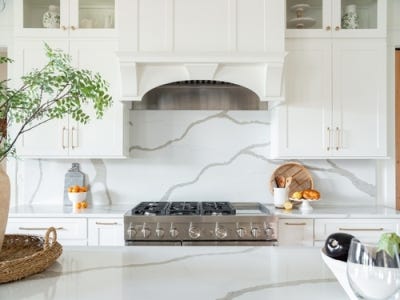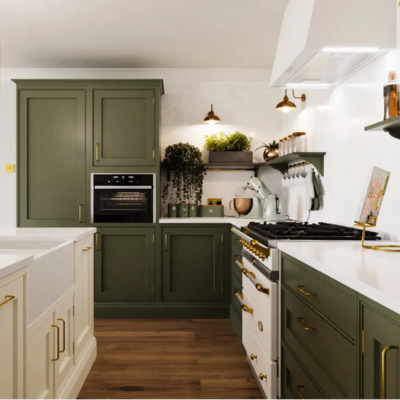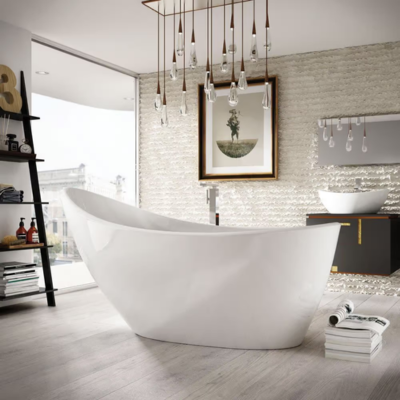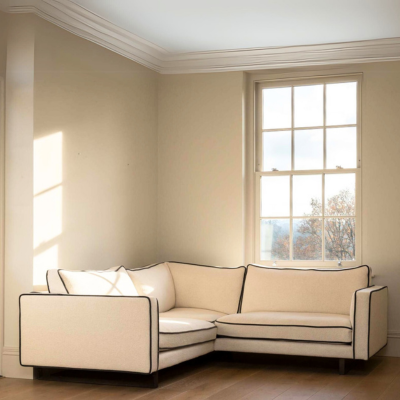Sturdy, well-crafted kitchen cabinets are essential to any home.
They’re the backbone of the kitchen and should be treated as such! Unfortunately, some homeowners might assume that once their cabinets are installed, no maintenance is required to keep them in their original condition: this is a myth!
Kitchen cabinets require just as much attention as ovens, sinks and fridge freezers. They need extra protection against humidity, heat and inevitable grease splatters.
To learn more about kitchen cabinet care, stay with Rehome.
1. Clean (regularly!)
Did you know that it only takes approximately 66 days to form a habit?
For homeowners who love getting stuck into cooking, you should make cleaning your cabinets second nature. With regular upkeep, you’ll keep their painted finish looking new for much longer.
Use gentle cleaners
Mild, non-abrasive cleaners work best for most types of cabinets.
Diluted dish soap or a 50:50 mix of vinegar and water is an excellent solution for removing common grime. On tougher, greasy spots, the vinegar solution can help break down oils (but it doesn’t contain any harsh, finish-tarnishing chemicals!)
Always avoid spraying cleaning products directly onto the cabinet; instead, apply the cleaner to a soft cloth and wipe the cabinet to avoid oversaturating surfaces.
Wipe down cabinets (daily, if possible)
Giving your cabinets a daily wipe-down is the best way to prevent dirt build-up! Using a soft microfibre cloth, wipe down cabinet surfaces daily or as needed to remove dust, fingerprints, and spills before they set in.
Pay particular attention to high-traffic areas, like cabinets near the stove. These areas are more likely to acquire grease splatters. For best results, dry the cabinets after each wipe-down (especially if you're using a water-based solution).
2. Prevent moisture damage
Kitchens are more moisture-prone than any other room in the home (except maybe the bathroom!). Simple factors like poor ventilation or regularly boiling the kettle for a cup of tea can damage cabinetry in the long term.
Invest in cabinet liners
Cabinet liners are protective, removable materials made using EVA vinyl. Usually placed on the bottom and back of your interior cabinet doors and shelves, these inexpensive liners can help manage moisture accumulation.
While also protecting your cabinetry against spills and scratches, they can also be removed without fuss.
Manage kitchen humidity
The main (and most worrying) consequence of humidity on your kitchen cabinets is condensation. If not properly managed, it can lead to issues like warping, swelling, and mould growth.
Responsible homeowners should make it their mission to control the humidity! Keep your kitchen well-ventilated while cooking: use extractor fans and keep windows open when possible to allow moisture to escape.
You can also invest in a dehumidifier, a tool that’s useful throughout the home, not just in the kitchen. Or, place moisture absorbers, like silica gel packets or damp traps, inside your kitchen cupboards.


3. Protect cabinet hardware
A cabinet without hardware is like a lock without a key!
A selection of high-quality knobs, pull handles and bars is equally intrinsic to your kitchen. These elements endure a lot of daily use, so keeping them in good working order requires a watchful eye.
Avoiding excessive force on handles
Applying unnecessary force to cabinet handles can lead to loosening, damage, or even breakage over time.
To prevent this, open and close cabinet doors and drawers with a light touch. Avoid pulling or pushing with excessive force, as this can strain the cabinet's structure.
However, if you’re prone to this, you may need to replace your current hardware with more comfortable-to-grip hardware. Ergonomically designed handles can reduce this tendency.
Regularly tightening hardware
Do your cabinet handles feel particularly loose? Do you hear a faint rattling noise but can’t quite find the source? Your handles and knobs may need to be adjusted.
Make it a habit to check your cabinet hardware for signs of loosening, perhaps once every couple of months. By taking a proact


Minimise heat exposure
While it’s impossible to protect your cabinets from heat entirely, there are some strategies you can implement to minimise intense exposure.
1. Use heat-resistant pads under appliances
Small kitchen appliances like kettles, toasters, and coffee makers generate heat that can affect the surfaces beneath them. Placing heat-resistant pads or mats under these appliances can shield your cabinets from damage.
2. Keep cabinets away from heat sources
Although sometimes, this can’t be helped, positioning cabinets at a safe distance from heat sources can keep them from sustaining damage. Where possible, cabinets should be installed with adequate clearance from ovens and hobs.
Doing this can prevent the heat transfer that causes warping or discolouration. However, when cabinets are adjacent to heat-emitting appliances, heat deflectors can offer additional protection.
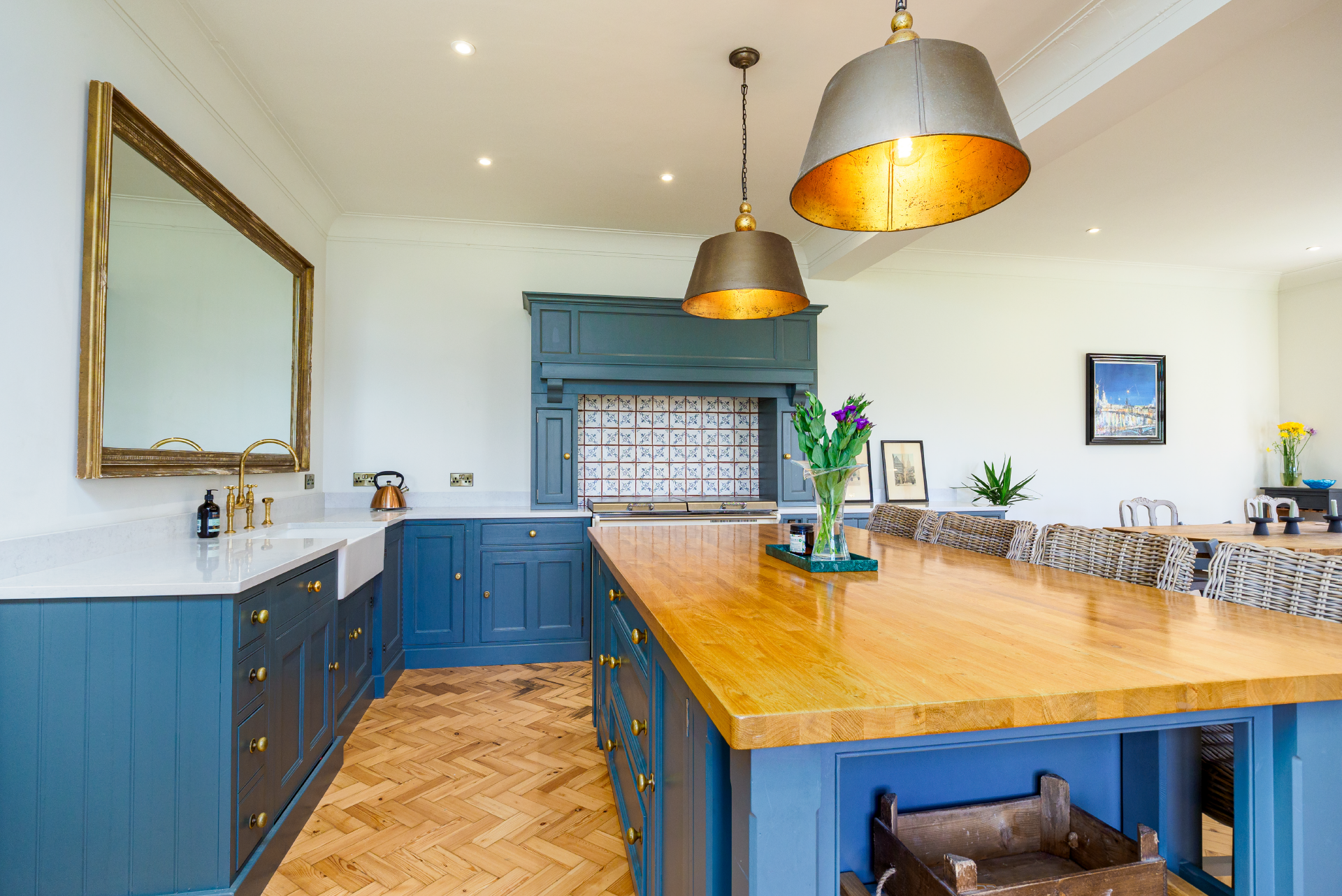

Shop for ex-display kitchens with Rehome!
Getting into the swing of a kitchen cabinet care routine may take time, but it’s worth it in the long run. If you're looking to refresh your kitchen (or find quality cabinets at a great price), consider purchasing an ex-display kitchen with Rehome!
Our selection of pre-loved cabinets and kitchens allows homeowners to upgrade their space in a sustainable, affordable way. Live in possible today.
